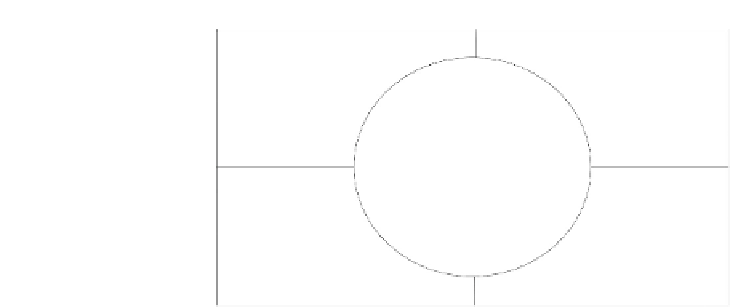Information Technology Reference
In-Depth Information
Ideal
Given
Margin
Ideal
New
Margin
Center
Real
Given
Margin
Real
New
Margin
FIGURE 2.5
Spatial map for assessing the layout semiotics according to Kress and van
Leeuwen.
Van Leeuwen, 2006, p. 2). Therefore, there is a difference between a speech act and
an image act.
Kress and Van Leeuwen (2006) describe the function of the image act: “The pro-
ducer uses the image to do something to the viewer. It is for this reason we have
called this kind of image a 'demand,' following Halliday (1985): the participant's
gaze (and the gesture, if present) demands something from the viewer, demands that
the viewer enter into some kind of imaginary relation with him or her” (Kress and
Van Leeuwen, 2006, pp. 117-118). Another kind of image is an offer: “it 'offers' the
represented participants to the viewer as items of information, objects of contempla-
tion, impersonally, as though they were specimens in a display case” (Ibid., p. 119).
Both concepts can be related to speech acts. Kress and Van Leeuwen suggest, that
despite the similarities “it would seem that 'image acts' do not work in the same
way as speech acts. When images 'offer,' the primarily offer information. [
...
] When
images 'demand,' they demand [
...
] the 'goods-and-services' that realize a particular
social relation. [
] There is no image act for every speech act” (Ibid., p. 123). The
last sentence reaffirms the distinct characters of the two kinds of acts.
There are other examples showing the distinctive features of speech acts and image
acts. “In the depiction of humans (and animals), 'involvement' and 'detachment' can
interact with 'demand' and 'offer' in complex ways” (Kress and Van Leewuen, 2006,
p. 138). Involvement is supported by showing the object in the eye's height and facing
directly the viewer, as is the case in most graphical UI icons. “How is 'involvement'
realized in language? [
...
] the two systems, the visual system of horizontal angle and
the linguistic system of possessive pronouns, differ in many ways” (Ibid., p. 139).
However, the visual system can be related to the linguistic system through the meaning
of space.
For example, there are certain places on the layout of a newspaper, a computer
screen, etc., that can convey a specific implied meaning, when combined with objects,
or composition elements. In Western culture (see Figure 2.5) “the elements placed on
the left are presented as Given, the elements placed on the right as New. For something
to be Given means that it is presented as something the viewer already knows, as a
familiar and agreed-upon point of departure for the message. For something to be New
...








Search WWH ::

Custom Search